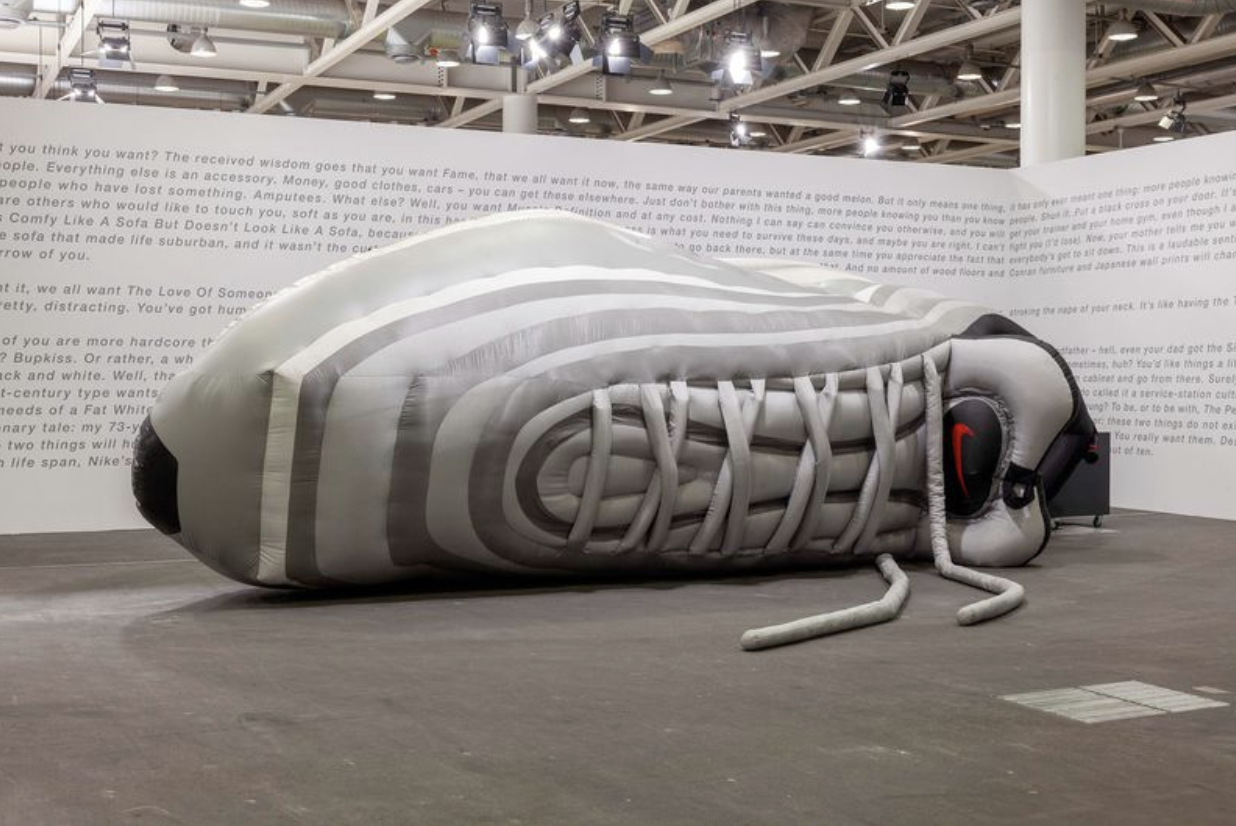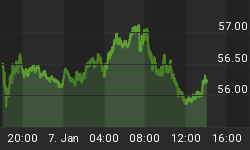Would a massive, 30-foot-long blow-up sculpture of a Nike sneaker give you goosebumps? If not, how about a 62-foot-long political statement against sexual harassment?

Source: Bloomberg: Olaf Nicolai's Big Sneaker [The Nineties], 2001, presented by Galerie Eigen + Art at Unlimited, in Art Basel.Courtesy of Galerie Eigen Then, if you’re willing to pay millions for this enormous art, where would you put it?
A 30-foot Nike blow-up is logistically challenging even for the foyer of the biggest mansion; and displaying the faces of 200 people accused of sexual harassment on your walls may not be how you want to wake up every day.
Welcome to Art Basel: The most important art fair in the world, and key venue for global mega-galleries to sell eight-figure pieces to billionaires.
And while the collection of ‘traditionally-sized’ art raked in millions on its first days, the showstoppers were enormous--pieces that only billionaires with their own museums could logistically house.
The enormous art exhibition is represented in Art Basel’s ‘Art Unlimited” section, which is a massive aircraft hangar-type space next to the main fair.
So far, of the enormous art on sale, a set of 28 colorful sofas by the late Franz West, an influential Austrian sculpture, has sold for $3.8 million.
Billionaires With Their Own Museums
The wealthy are looking for ways to spend their money, and wine and jewelry just aren’t cutting it anymore.
More recently, this has also led to a new trend of private museums that are popping up as the only ones readily will to invest in huge art.
That’s what Art Basel’s “Unlimited” hall is all about: It’s a funhouse for the wealthy. This is ‘unlimited’ in size, yes--but billionaires are also looking for artists who push the limits of creativity.
“The nature of Unlimited is that you submit these proposals for enormous things that could, broadly speaking, never fit in anyone’s house,” Alex Logsdail, executive director of Lisson Gallery, told Bloomberg.
The new version of the Andy Warhol “Soup-can” is something like a massive blow-up Nike sneaker. And it’s like to age well, providing it is structurally sound. After all, when billionaire collector J Tomilson Hill bought Warhol's famous work it was $340,000. Today it’s worth over $9 million.
Related: Tech Crackdown Creates $120 Billion Bloodbath
Among the billionaires now erecting their own galleries are Polish billionaire, Gra?yna Kulczyk, who actually carved out a mountain in Switzerland to build his museum. There’s also Glenstone, as Bloomberg notes, owned by Mitchell and Emily Rales in Maryland, and boasting 1,300 works of art worth potentially $4 billion. It’s even undertaking a $200-million expansion. One of the pioneers of the private billionaire museums was the Walton family, which owns the Crystal Bridges Museum in Arkansas.
Billion-Dollar Art: We’re Almost There
The stage for Art Basel’s Unlimited showing was nicely set by Jeff Koons, the American who now ranks as the most expensive living artist in the world.
Last month, a Christie’s auction sold his Rabbit 1986 for $91.07 million, with fees.
That’s $1.4 million more than another blockbuster sold by Christie’s in November--a painting by David Hockney, Portrait of an Artist (Pool with Two Figures) (1972). Christie's record auction night opened with bidding at $40 million.
After just ten minutes of bidding, Rabbit sold for a hammer price of $80 million to art dealer Robert Mnuchin, the father of Steven Mnuchin, U.S. Treasury Secretary.
That’s evidence enough that the art world is pushing the limits of creativity to new heights--and towards the precious $1-billion mark.
If we take out the “currently living” aspect, the title goes to Leonardo da Vinci's Salvator Mundi, which went for $450 million at Christie's in 2017.
Is there enough interest to push this further? Yes, according to a new book by author Michael Shnayerson, Boom: Mad Money, Mega Dealers, and the Rise of Contemporary Art. We’re talking about “mega dealers”, writes Shnayerson, who negotiate multi-million-dollar deals in elite circles.
“You can be some industrialist or software king who's just made billions and you have no life, and you come over to Basel and you write a couple of checks, and you will soon have friends. And you'll see those friends at each next fair. You can spend the whole year going from art fair to art fair,” Shnayerson told Town&Country.
By Istria Alic for SafeHaven.com
More Top Reads From Safehaven.com:
















